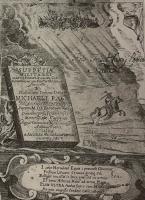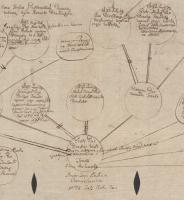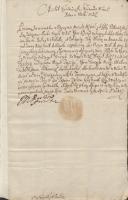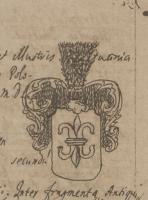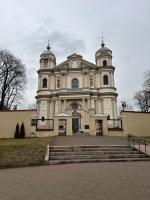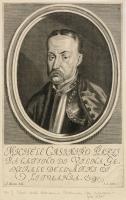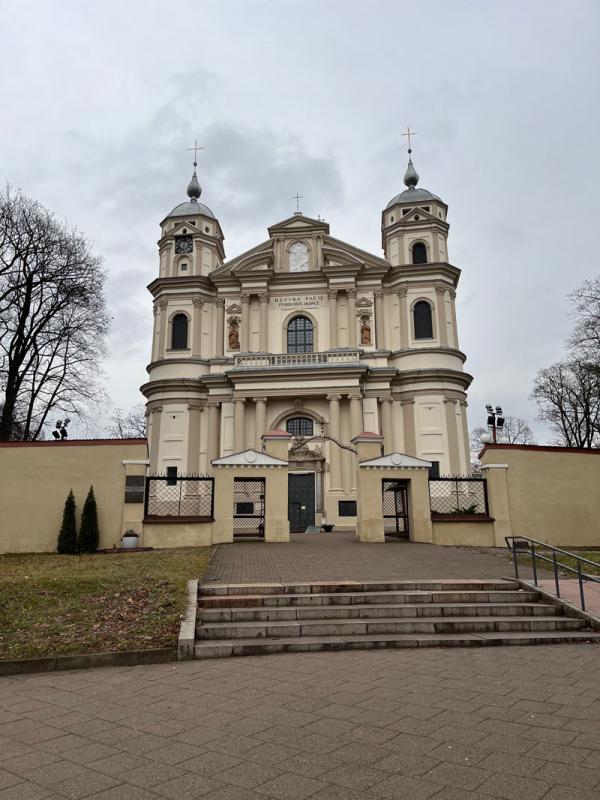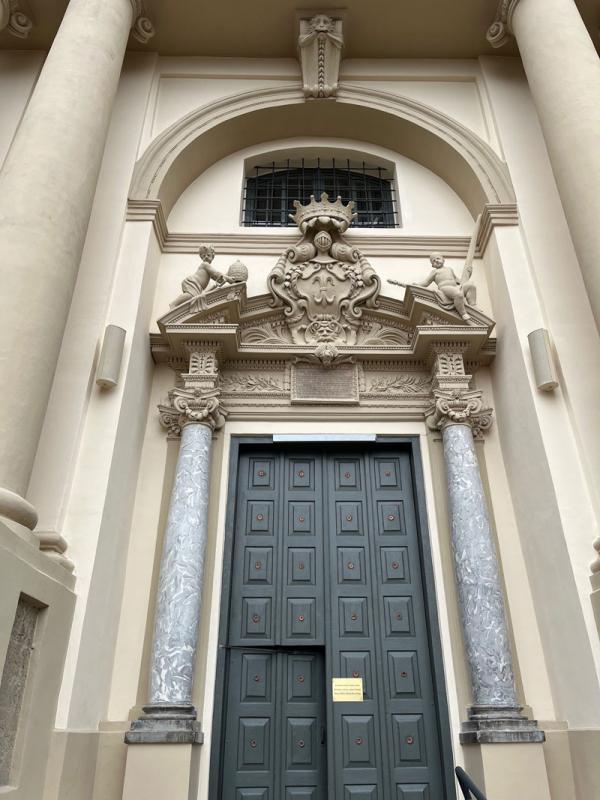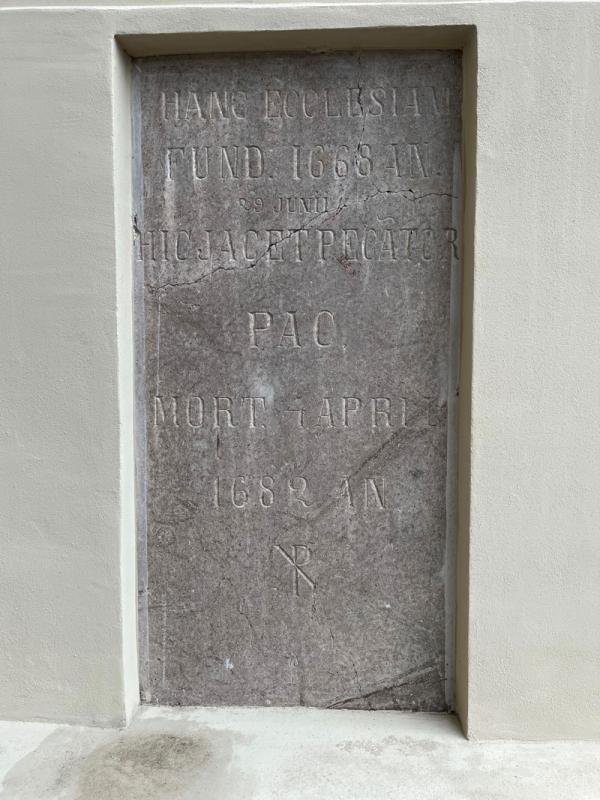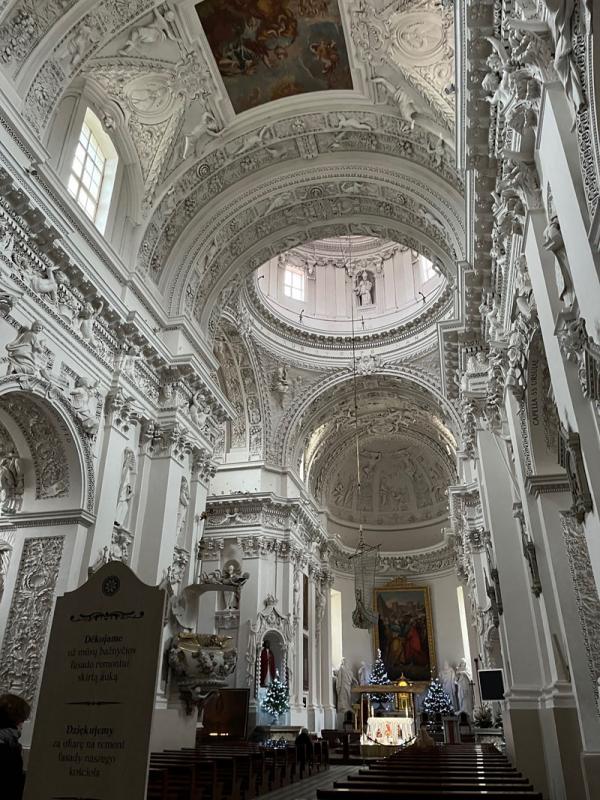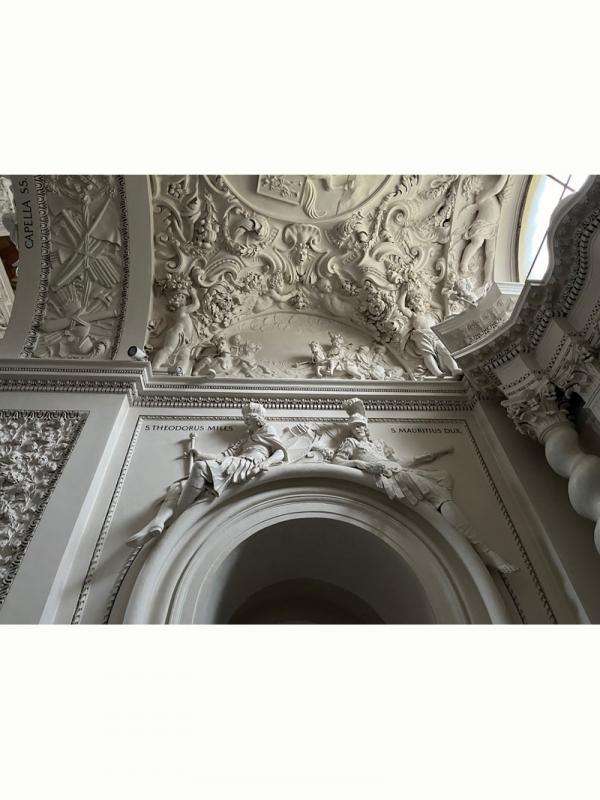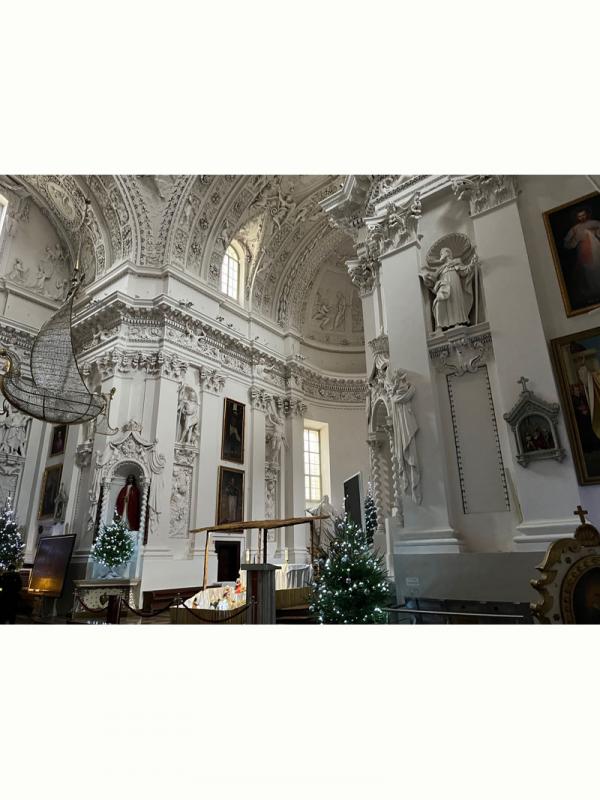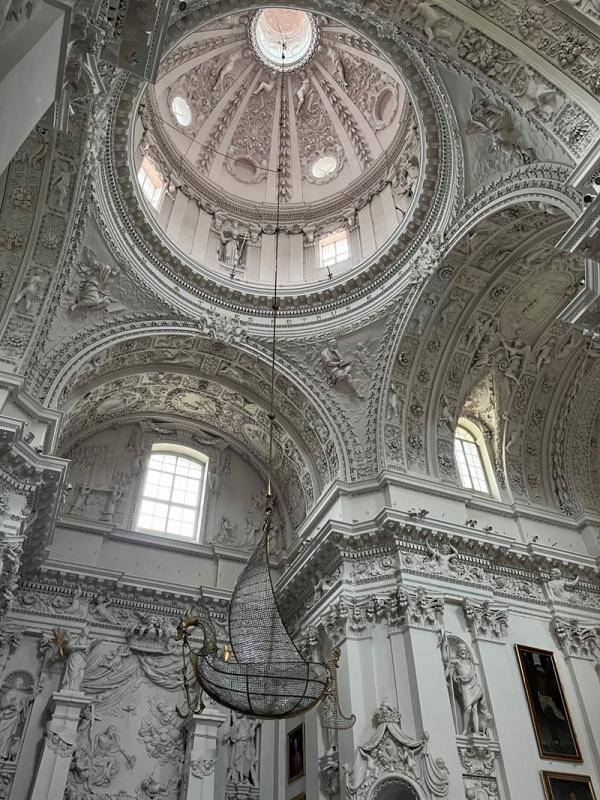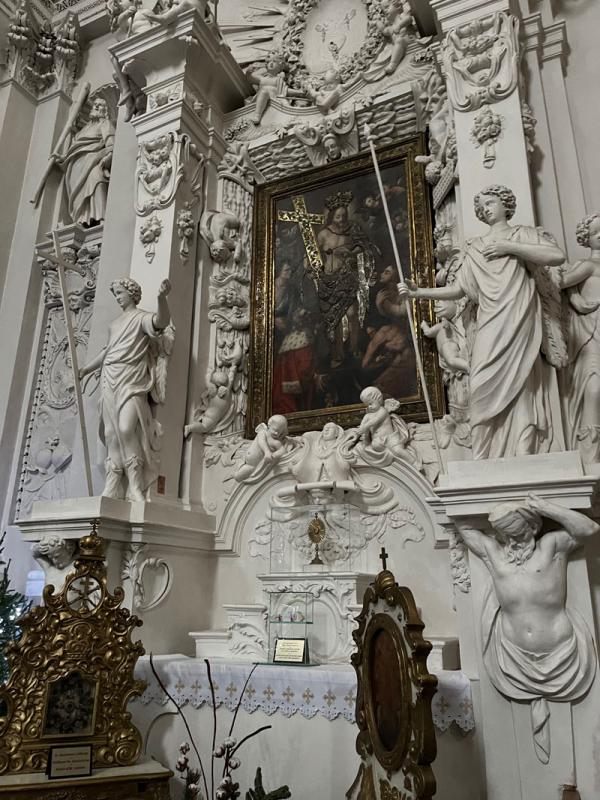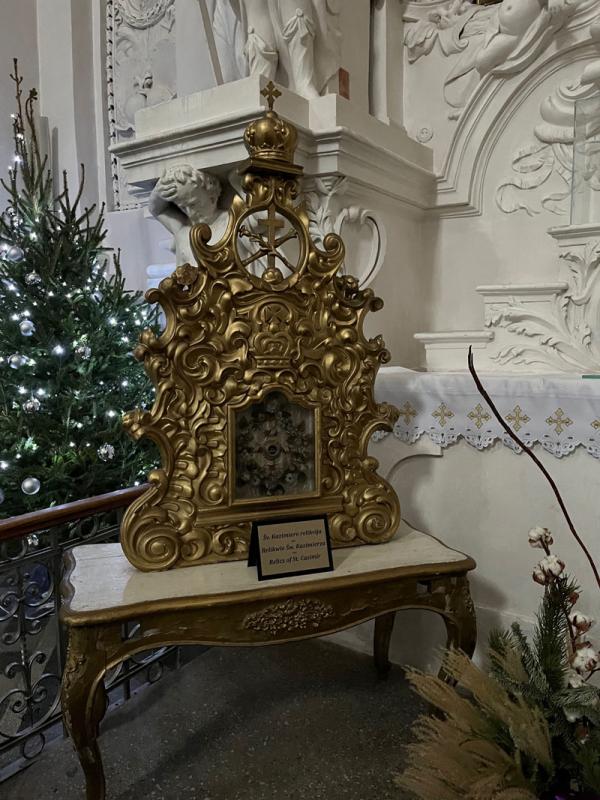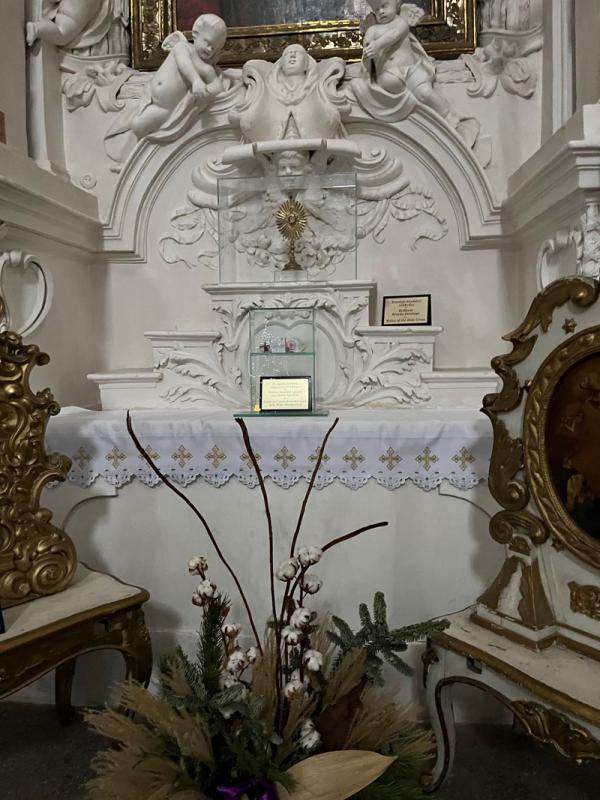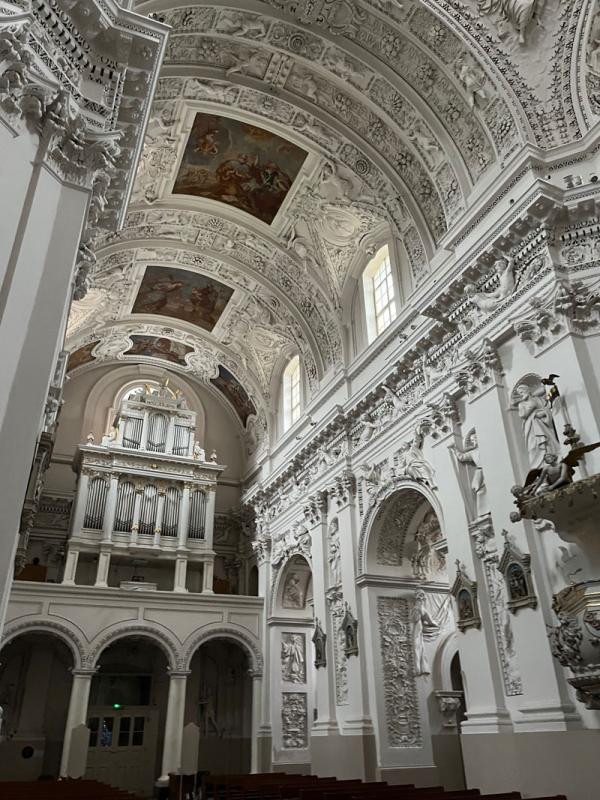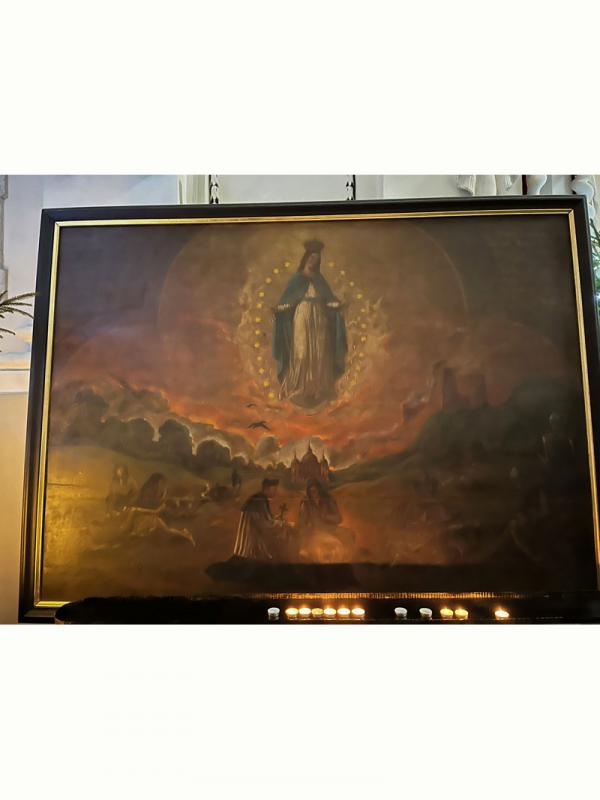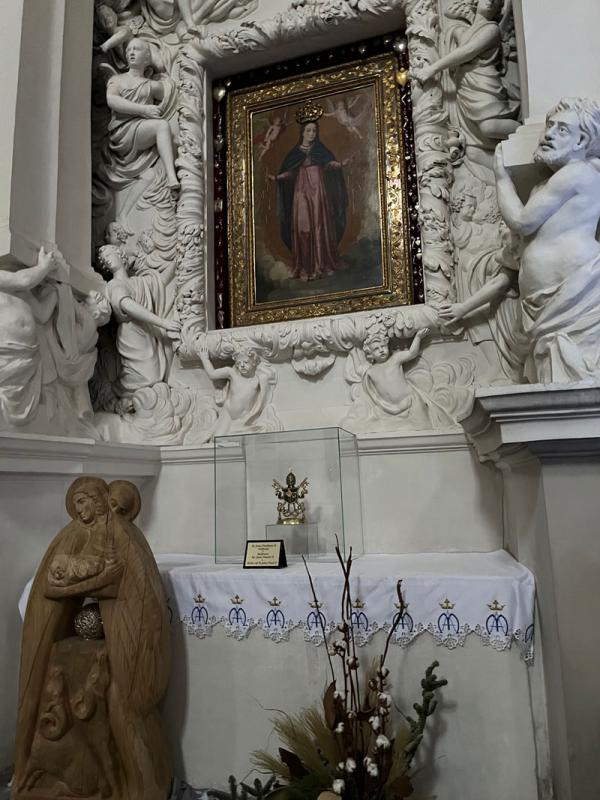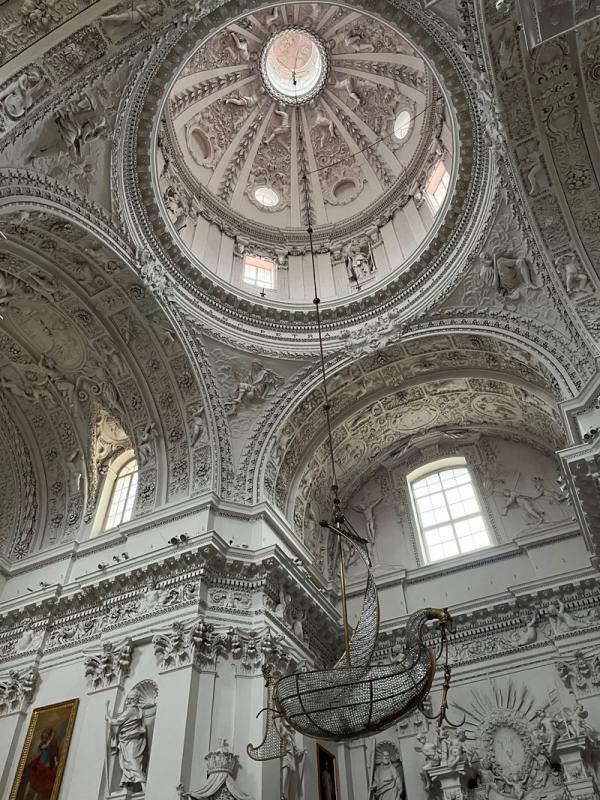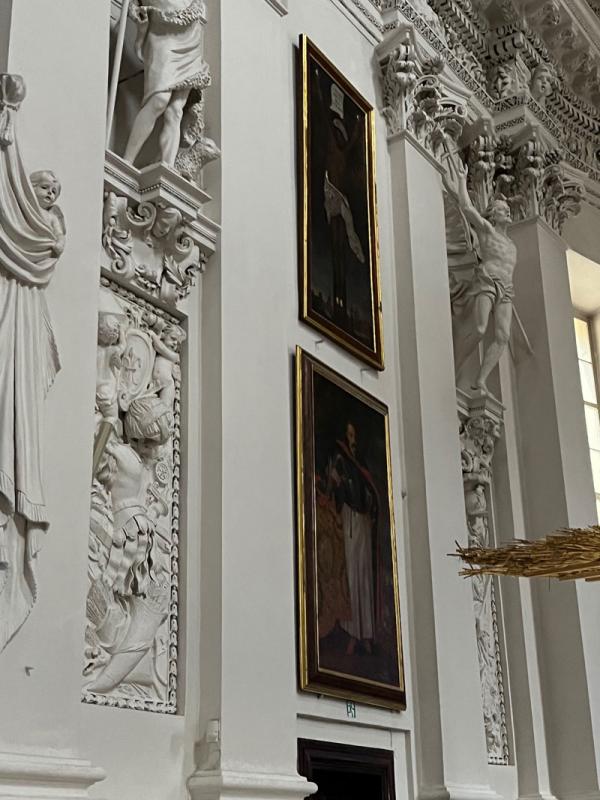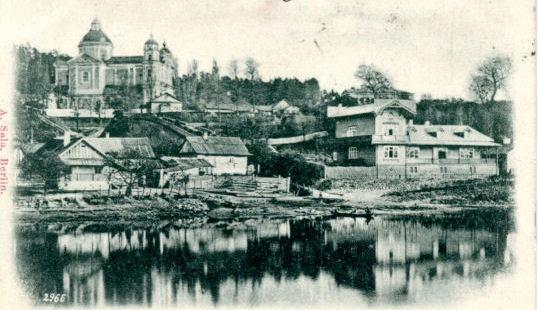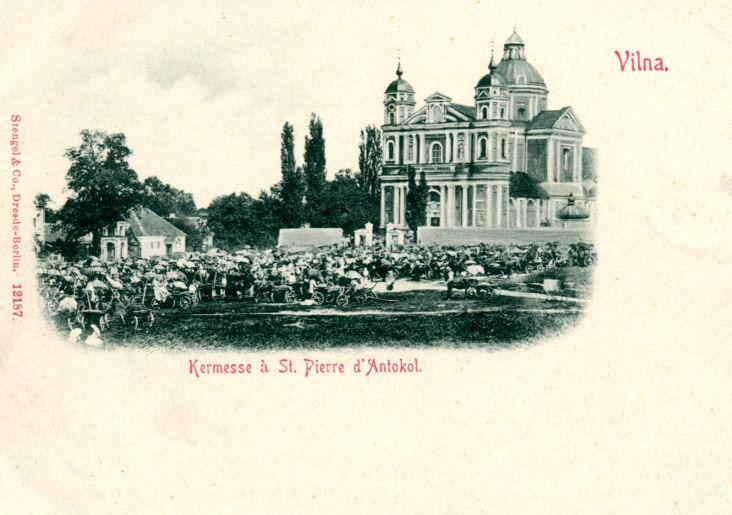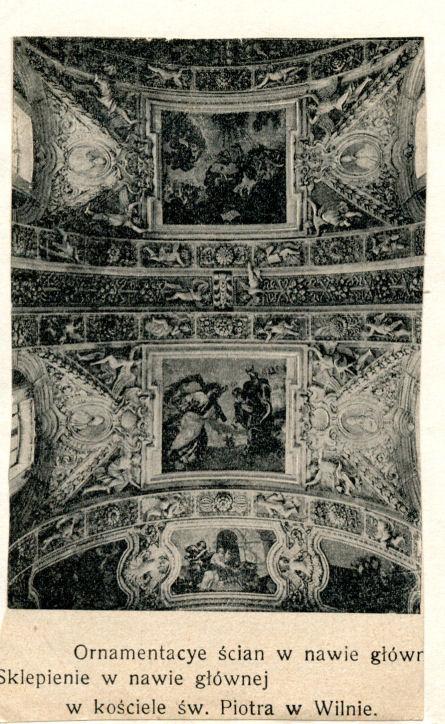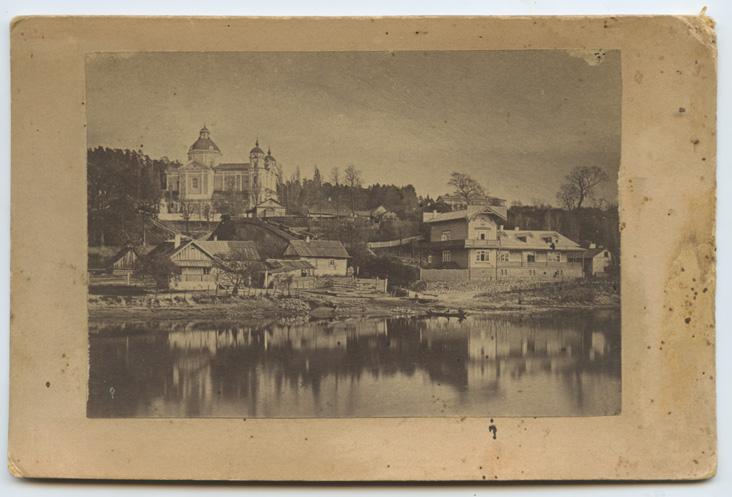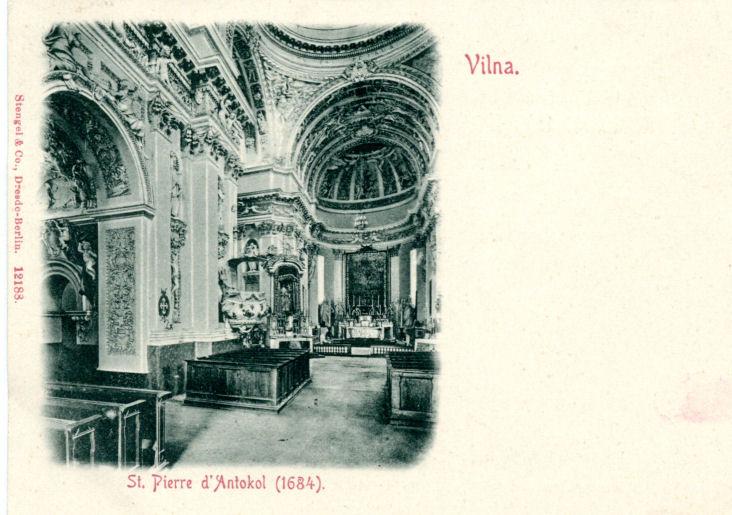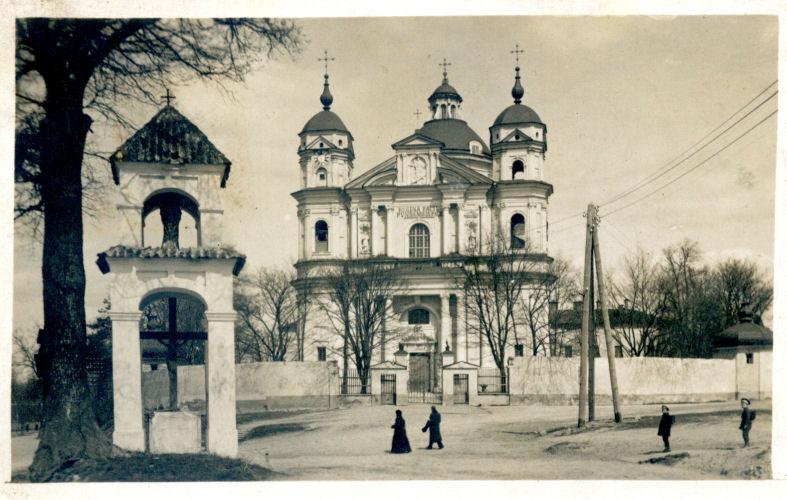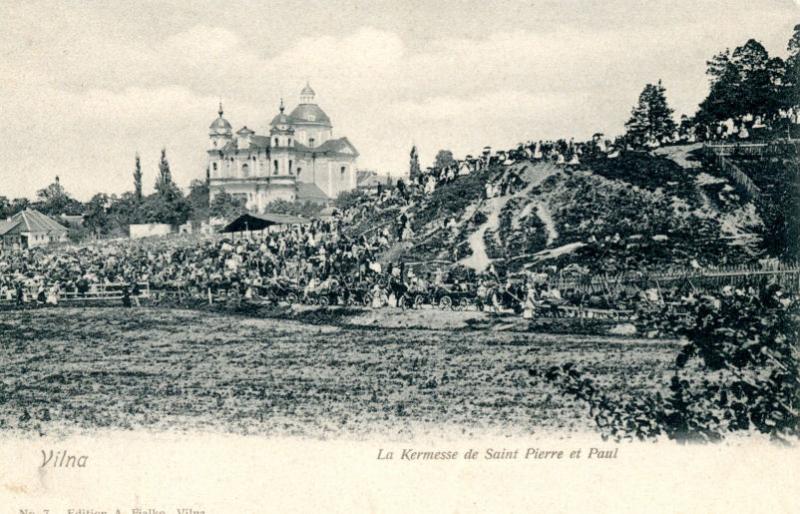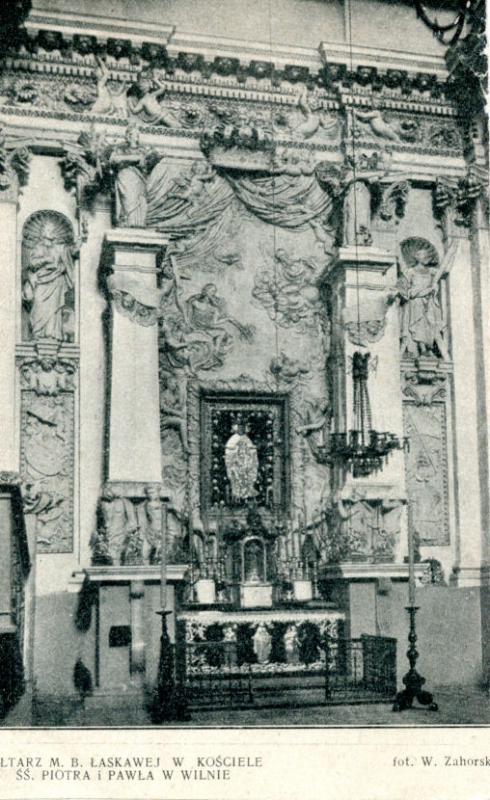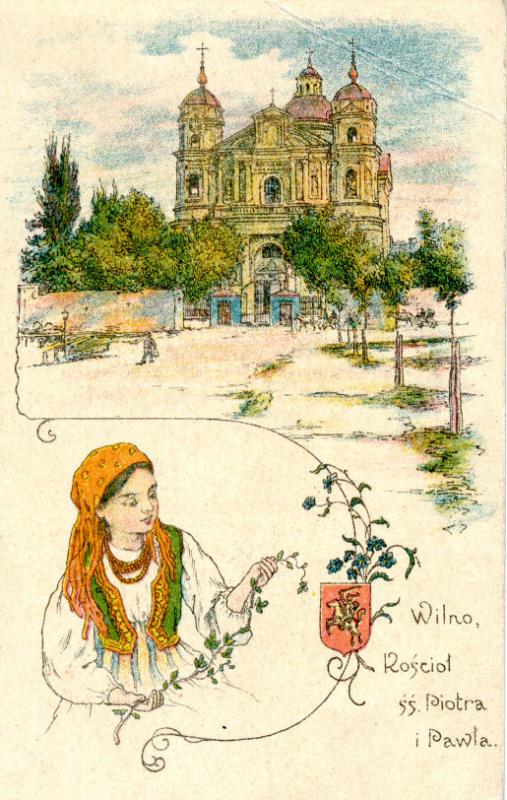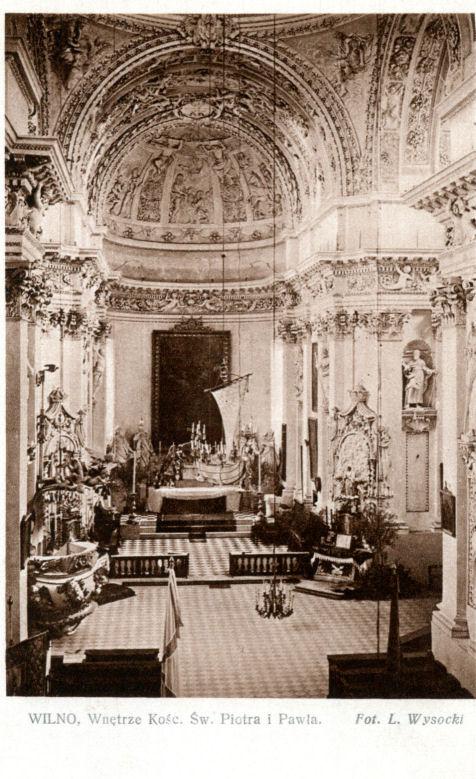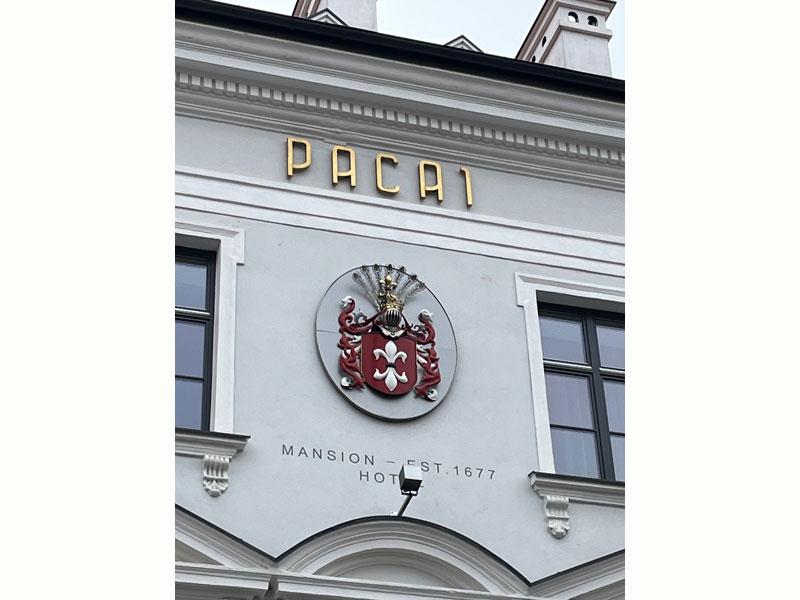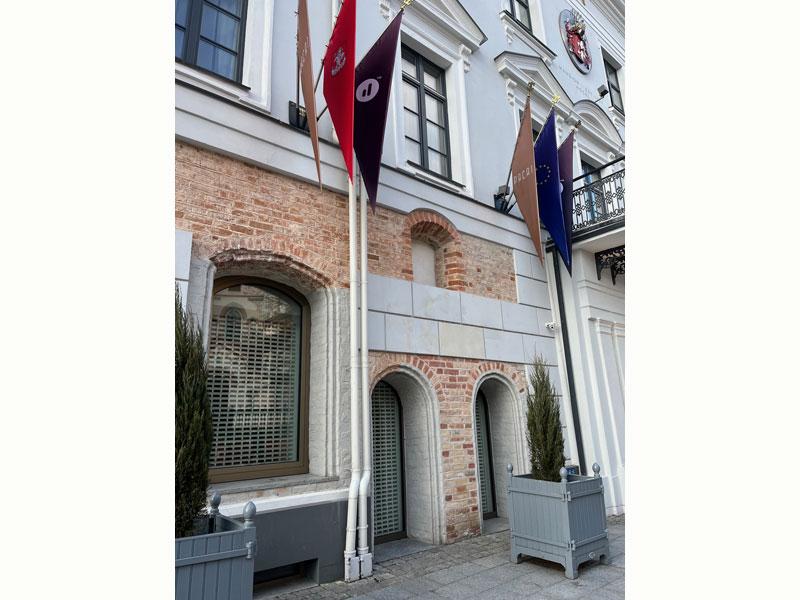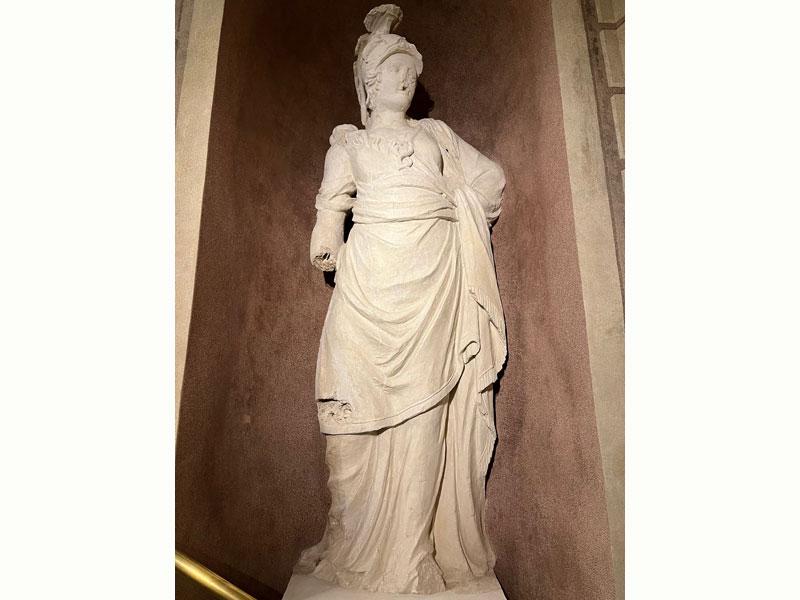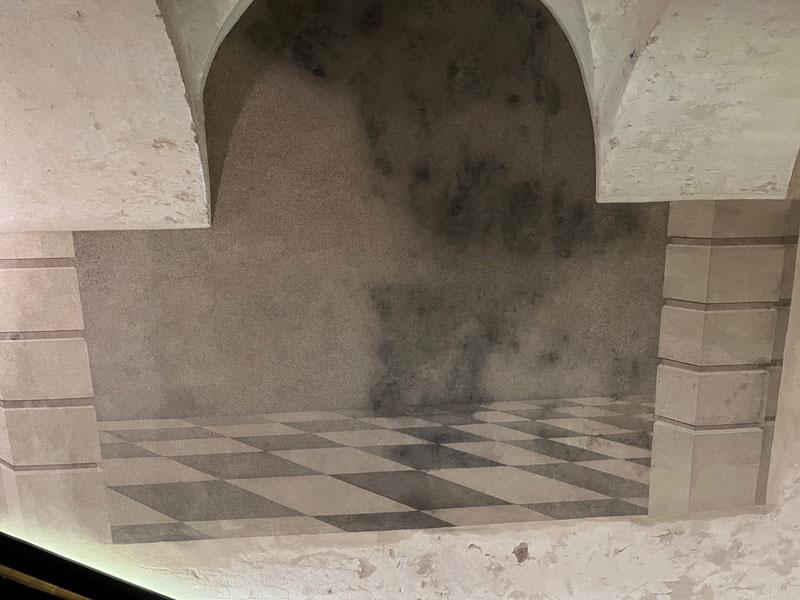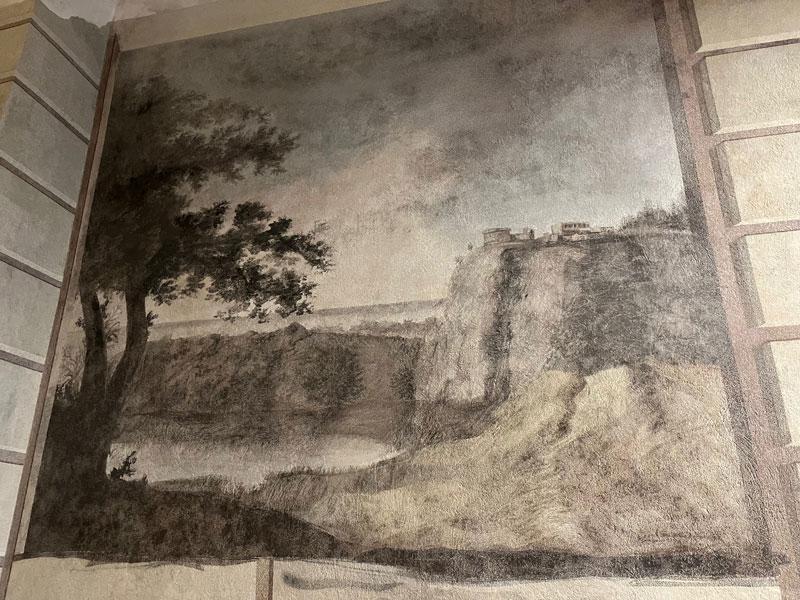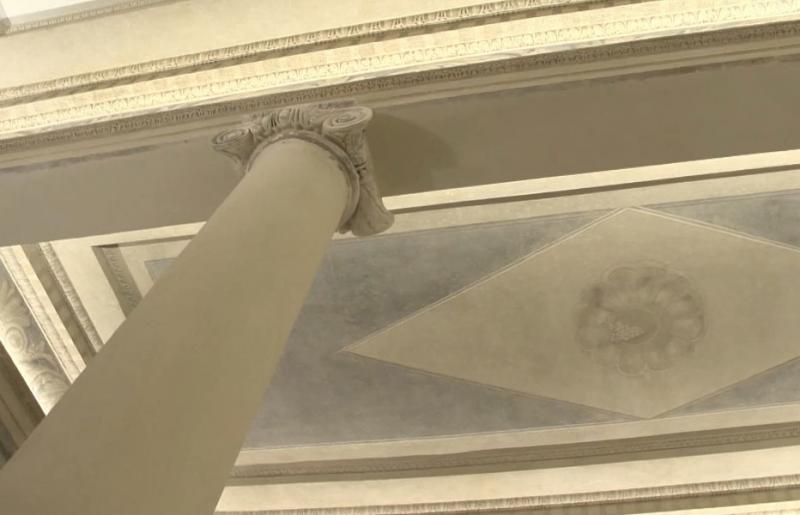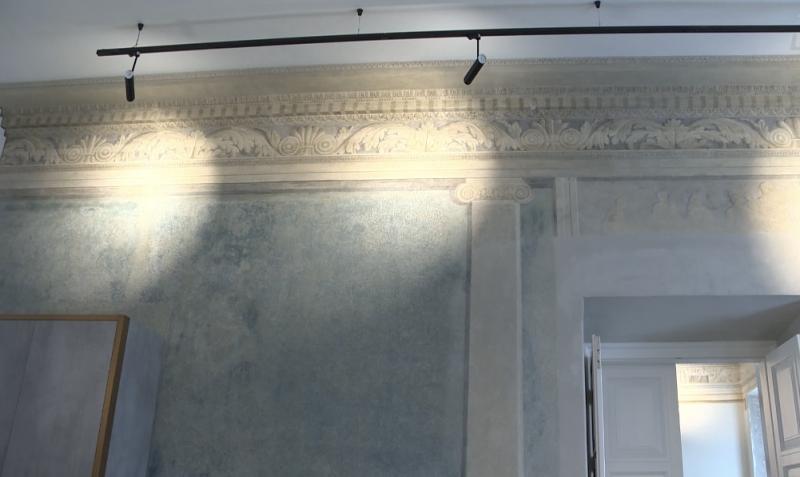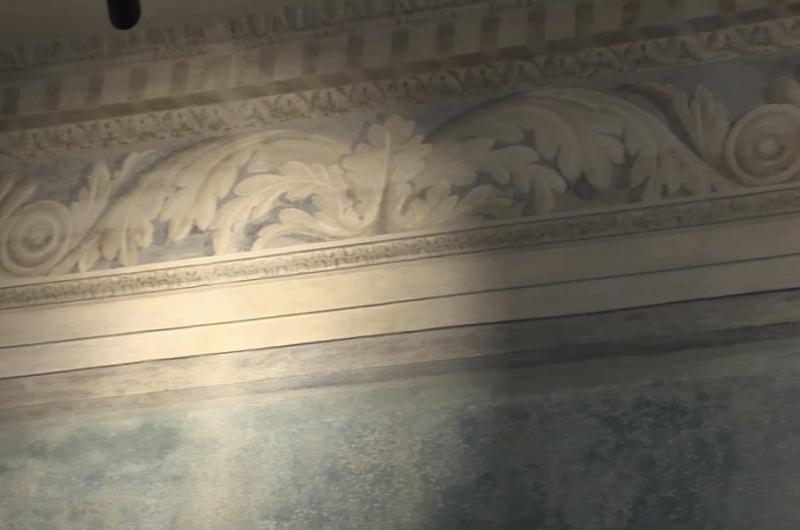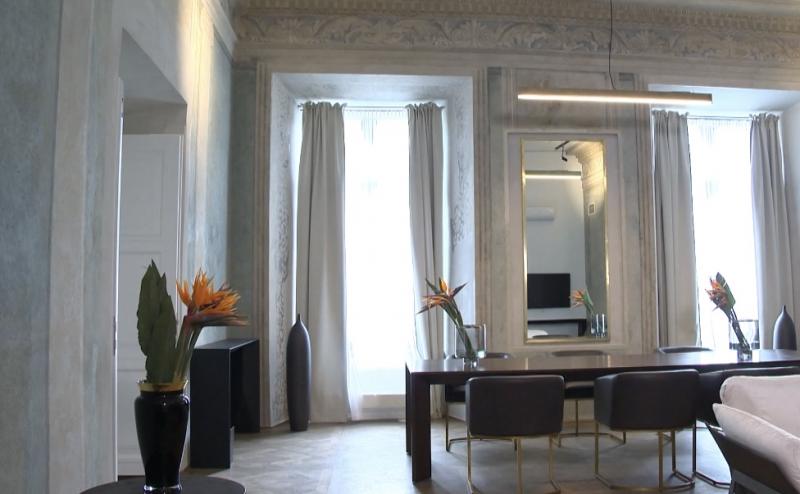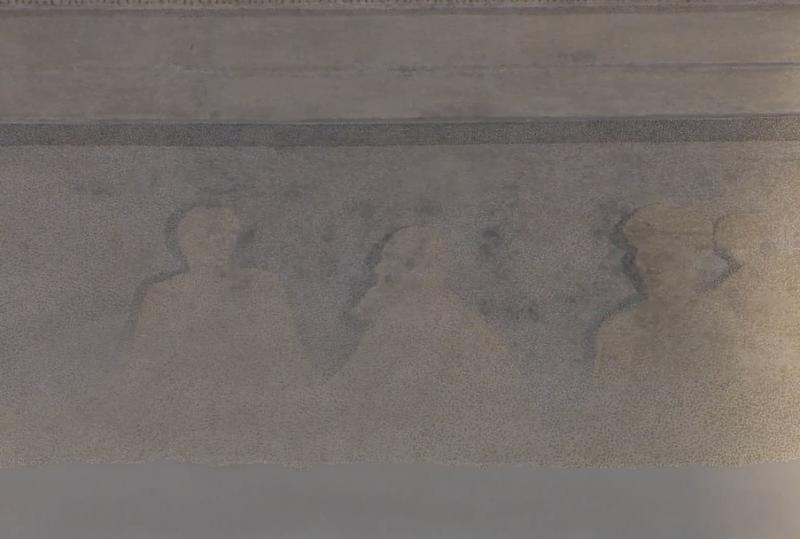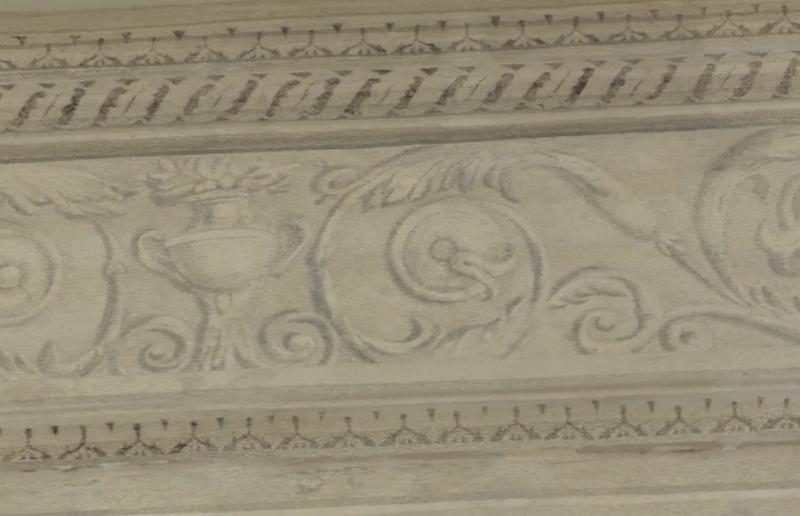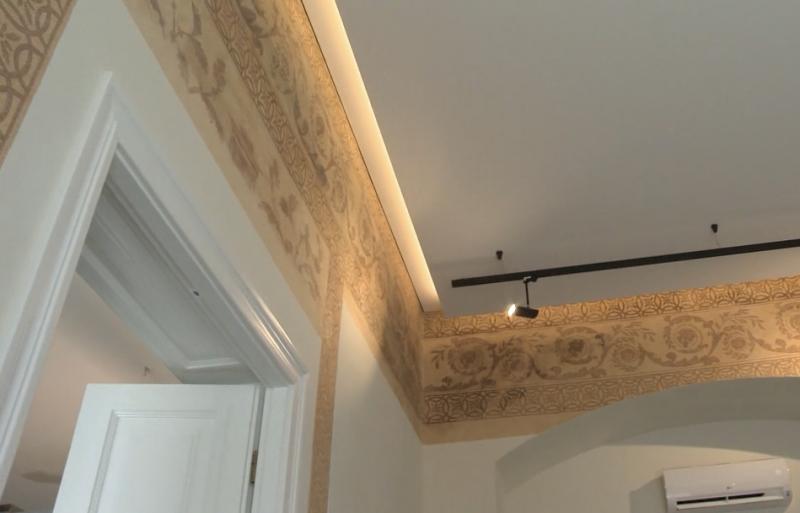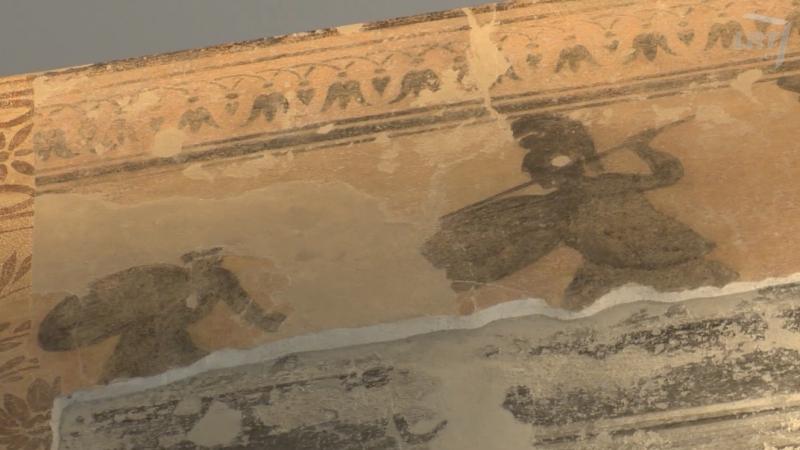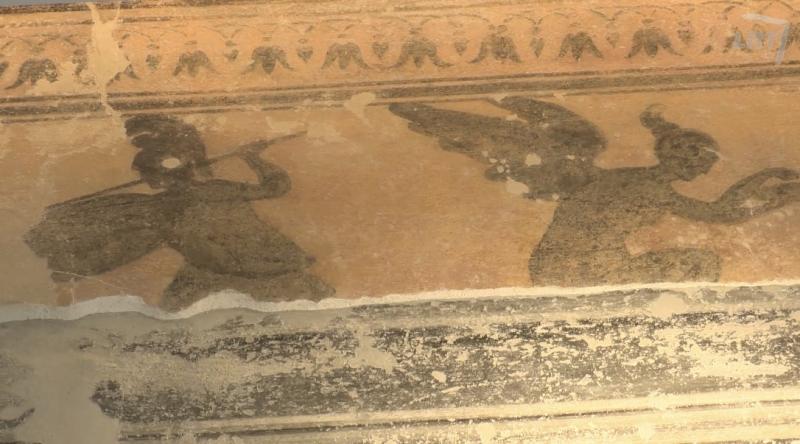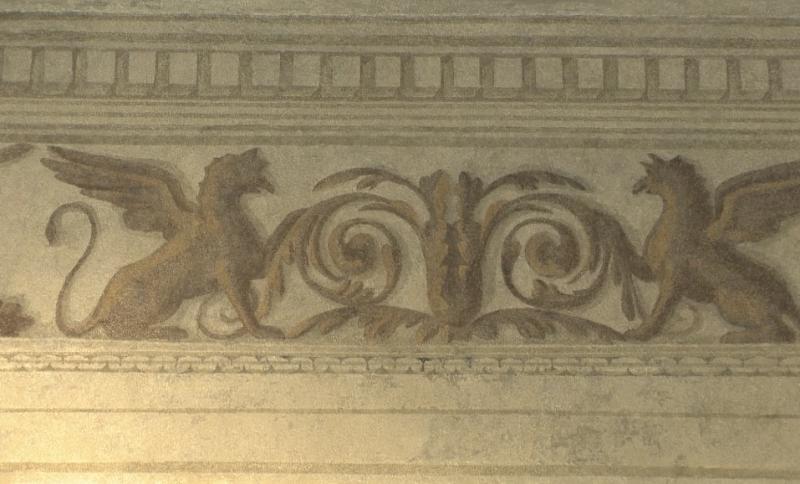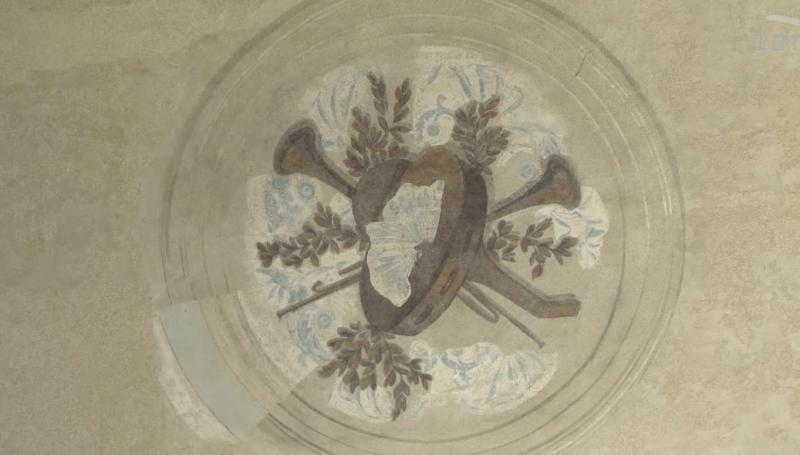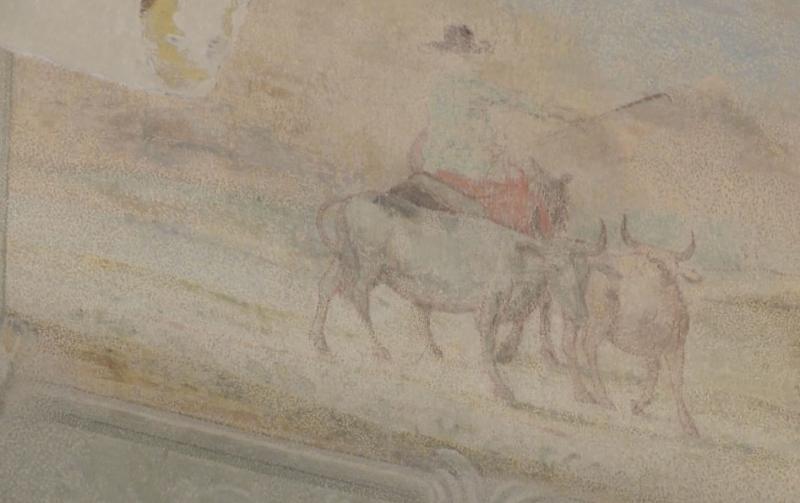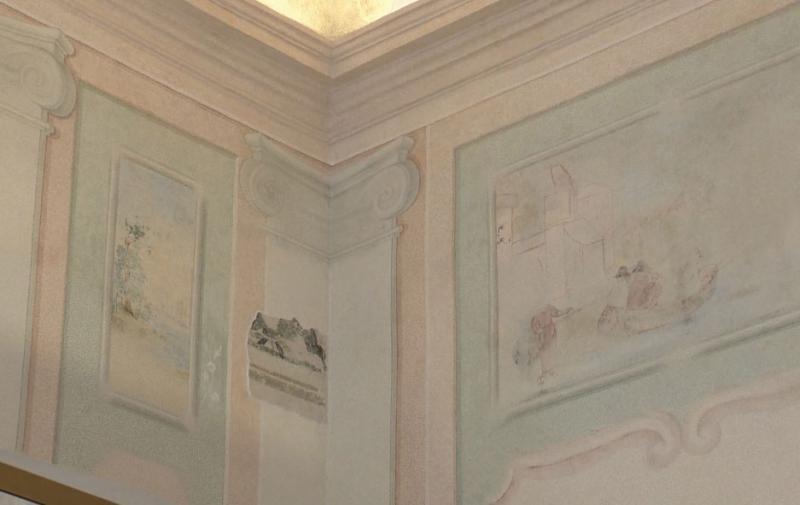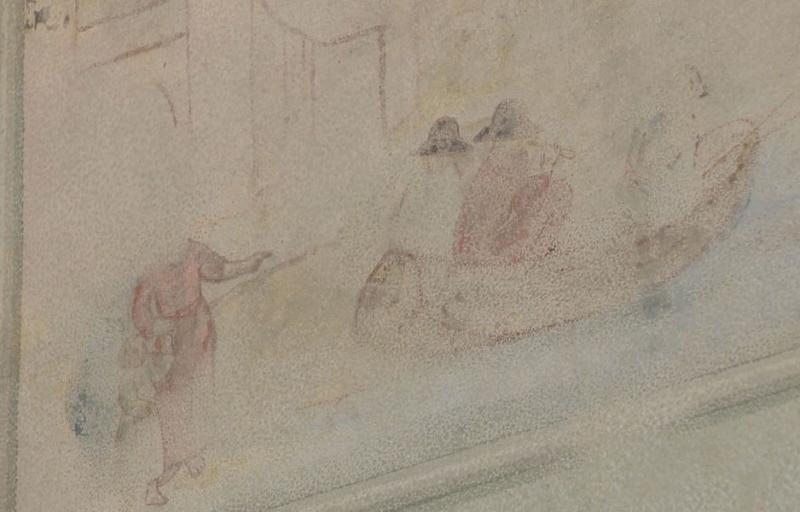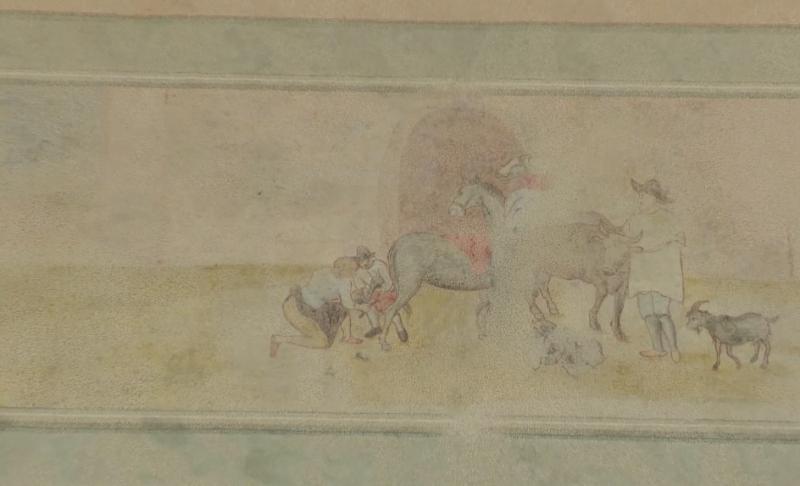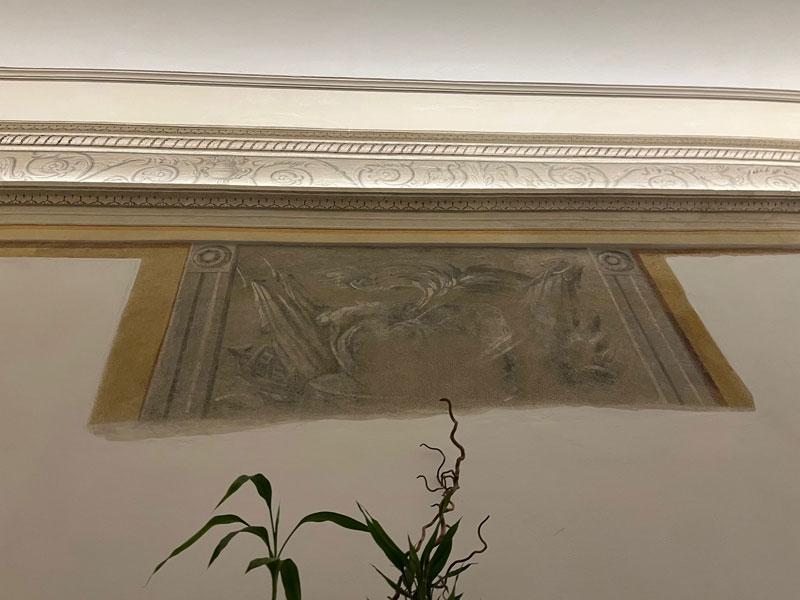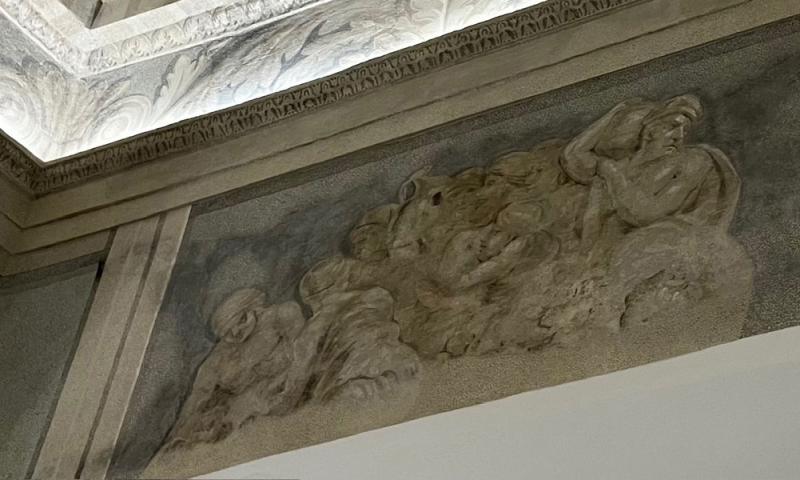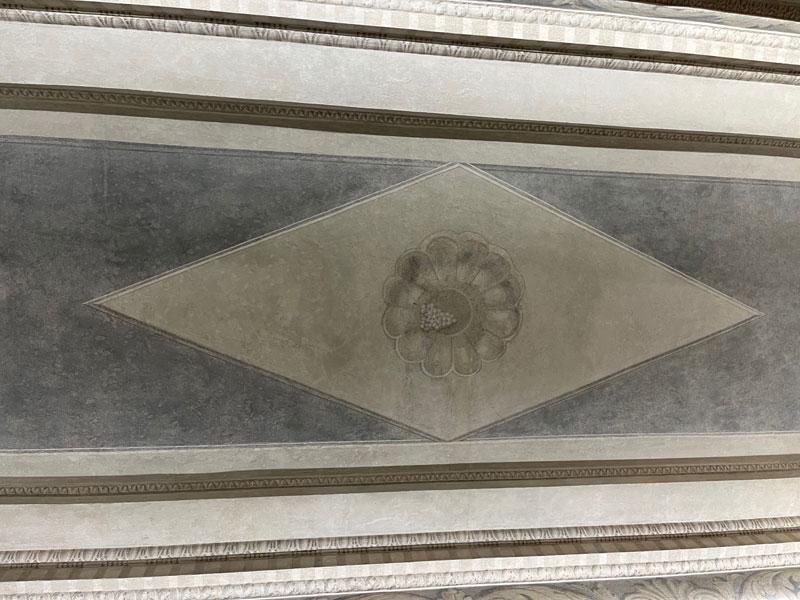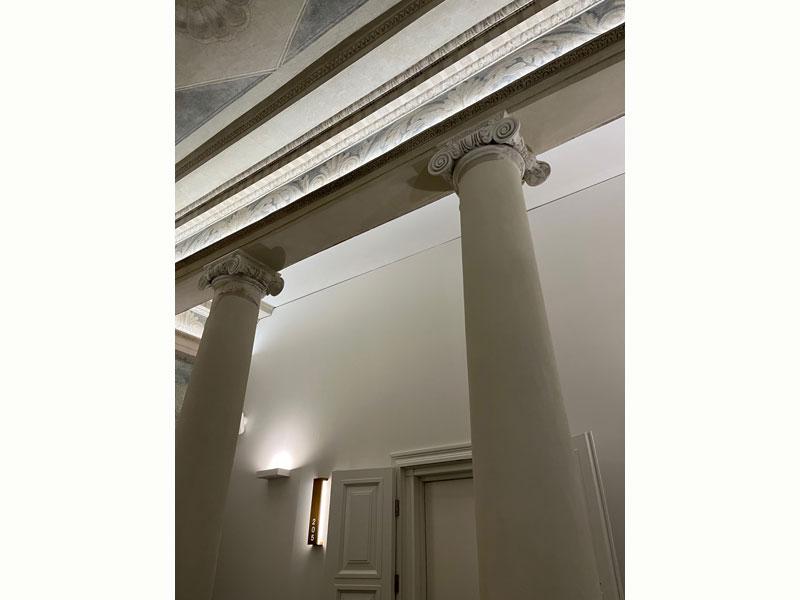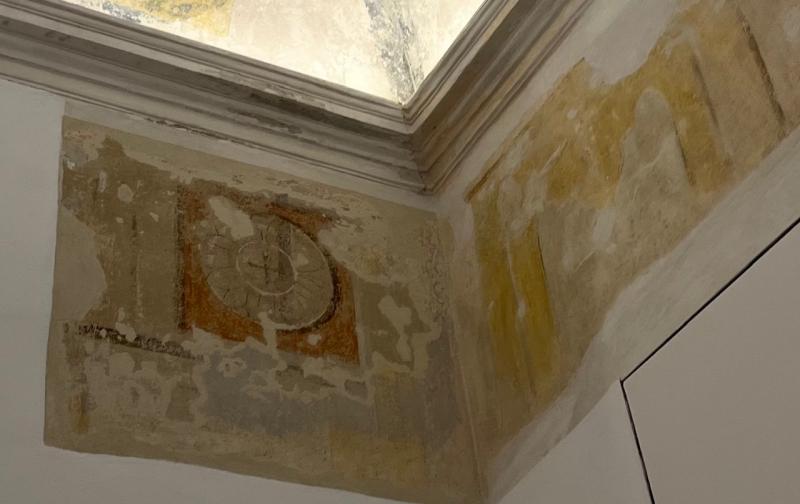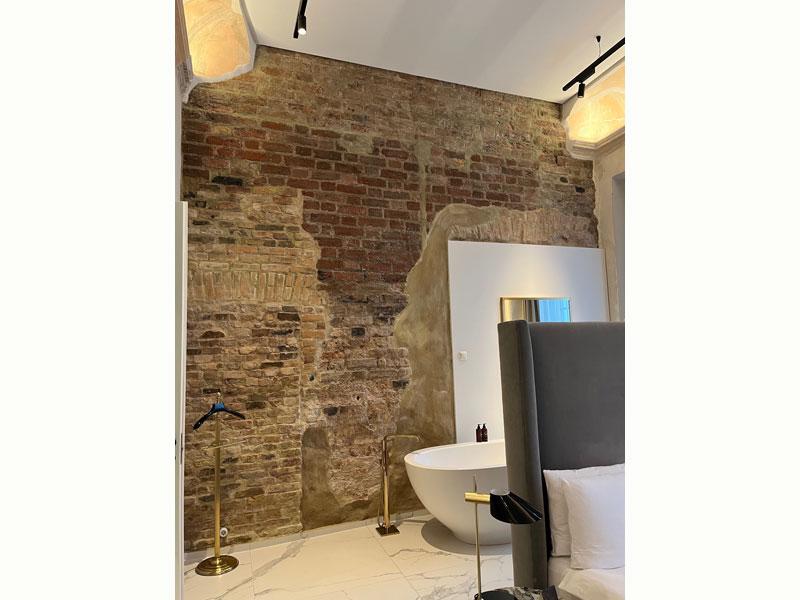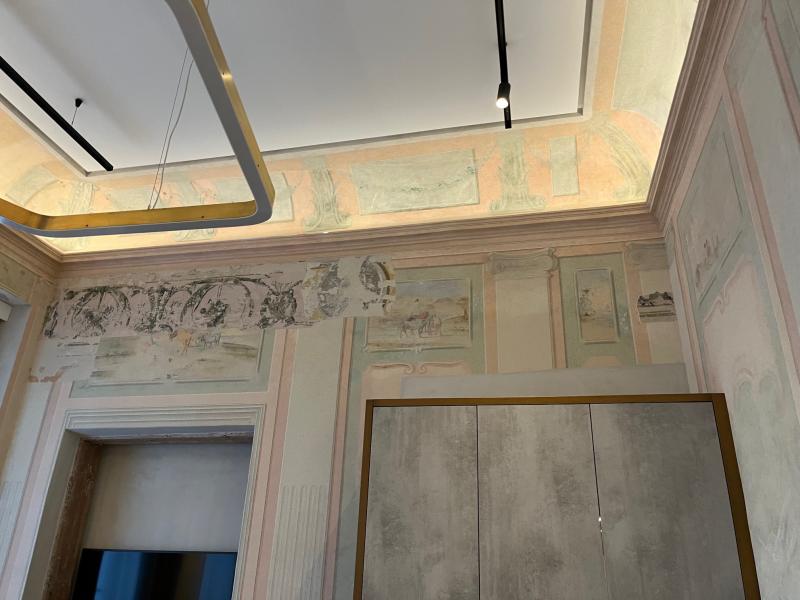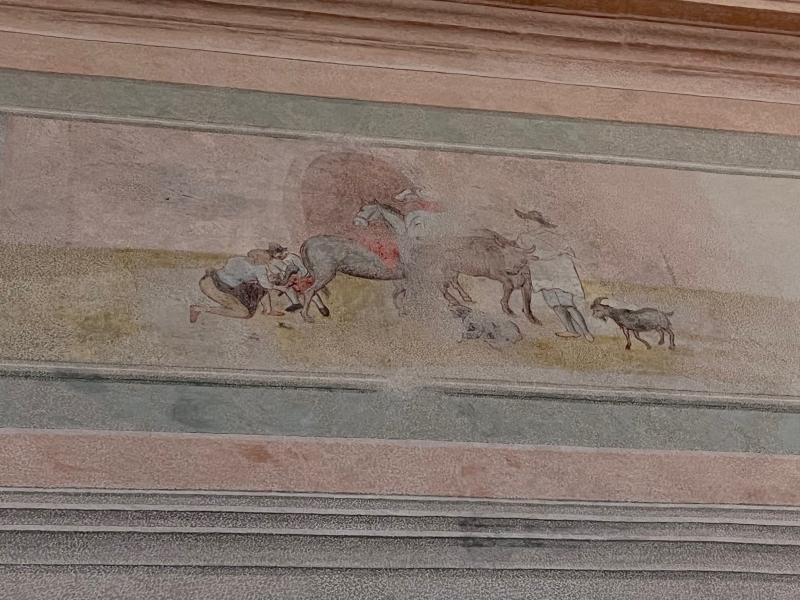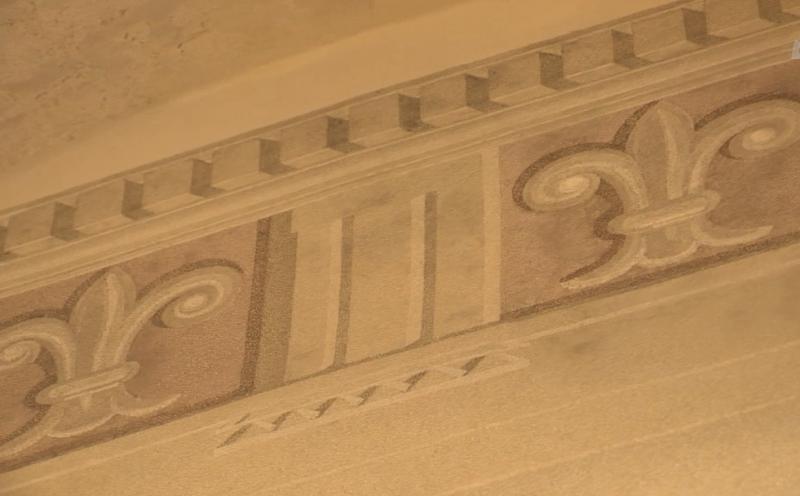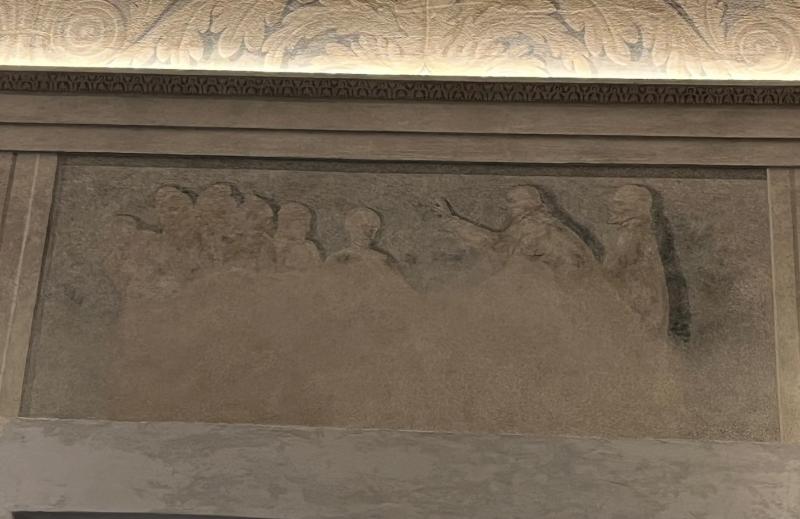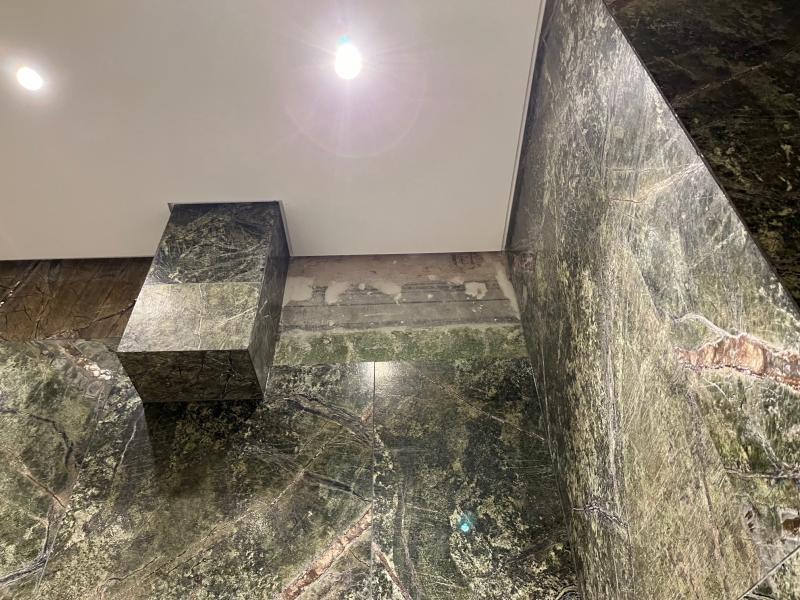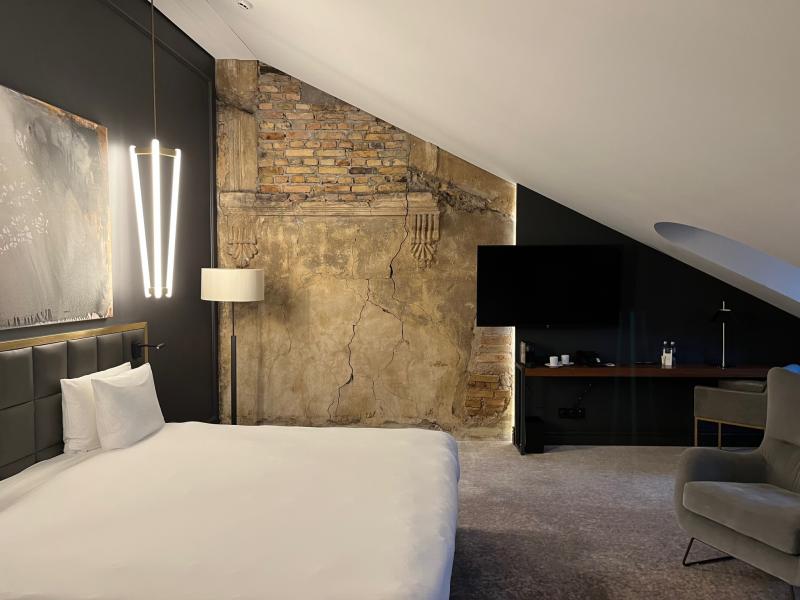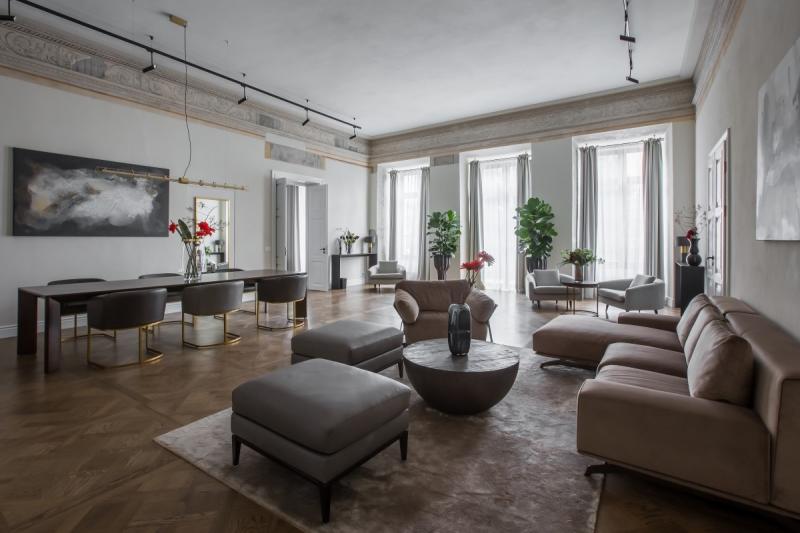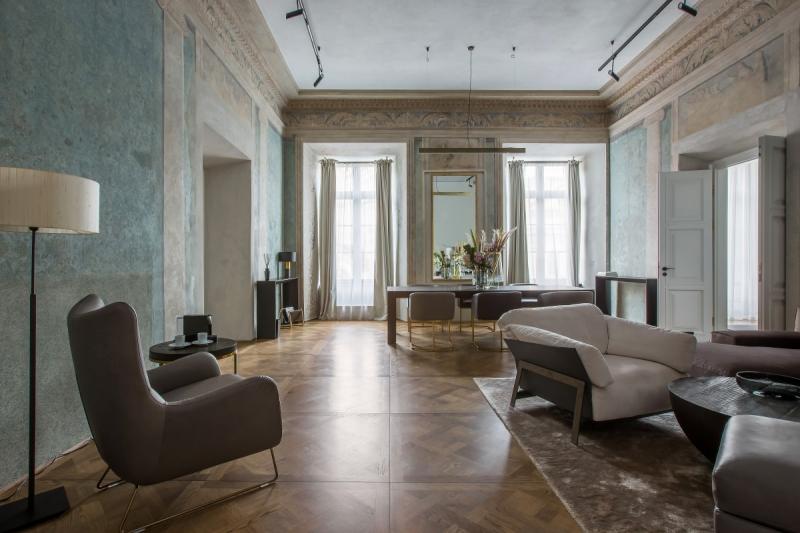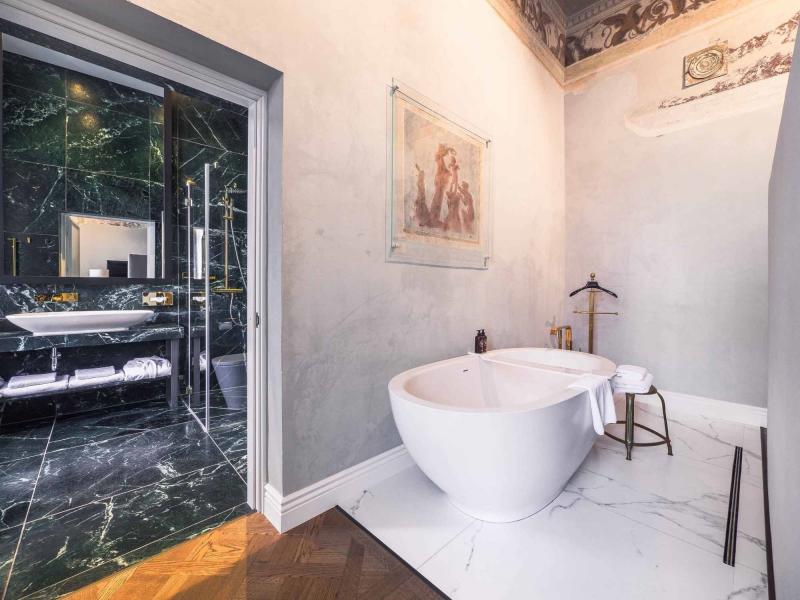The most famous buildings in Vilnius associated with Mykolas Kazimieras Pacas
There is a number of buildings and churches connected with Mykolas Kazimieras Pacas, of which the two most famous are discussed here in more detail:
The Church of the Apostles St. Peter and St. Paul in Vilnius
One may find out a great deal about Mykolas Kazimieras Pacas from genealogical trees, seals, documents, paintings and tapestries, but there are also his connections to various buildings that we would like to discuss. One of the most beautiful gifts from Mykolas Kazimieras Pacas to the city of Vilnius is the Church of the Apostles St. Peter and St. Paul. This architectural gem of the city, dedicated to St. Peter and St. Paul, with its interior decoration, transcends the times, art historians claim. The church with its unparalleled beauty was famous not only in Lithuania, but also throughout Europe. It was undoubtedly innovative in the environment of Vilnius–the first brick church outside the city wall. Until then, only wooden churches had been built in the suburbs of the capital. Perhaps the most brilliant idea of M. K. Pacas is the interior decoration of the new church. Pacas spent the same amount on the décor as on the church itself. The church is beautiful not only from the outside – its interior décor captivates visitors with its beauty. According to Dr. Mindaugas Paknys, when admiring the three thousand white figures and figurines (no one has ever counted exactly how many of them decorate the walls, columns and vaults of the church), one should take into account at least a few things. Until then, the decoration with stucco had almost never been used in the Grand Duchy of Lithuania, so this idea of Mykolas Kazimieras Pacas had to be surprising to his contemporaries. Moreover, Lithuania lacked architects who would be masters of this type of décor. Stucco (a mixture of gypsum and lime) is not a strong material, requiring special care, and in the conditions of cold and wet climate of Lithuania it does not harden well. This did not prevent Mykolas Kazimieras Pacas from inviting two great sculptors from Italy – Giovanni Pietro Perti and Giovanni Maria Galli. Both spent eight years decorating the church (1676–1684). The Grand Duchy of Lithuania had not seen masters of such skill before. All researchers admit that there had been no other church in the territory of the Grand Duchy of Lithuania that could have had as many visual themes and scenes as The Church of the Apostles St. Peter and St. Paul in Vilnius.
Dr Irena Vaišvilaitė in her book “Walk in Christian Vilnius” (2017) proposes to pay attention to the fact that “In the right wing of the transept of the church there is the altar of the Five Wounds of Jesus with a venerable painting. In the other wing of the transept is the altar of The St. Virgin Mary the Merciful, to whose intercession the people of Vilnius turned during pandemics. This image receives attention from believers to this day. The painting is unusual in the context of Lithuania, as it is a copy of a highly respected image brought from the Italian city of Faenza. The St. Virgin Mary is depicted here breaking the arrows of God’s wrath. Elements of pagan religion had remained in the religious imagination of the peoples of Southern Europe. One of them is the imagining that human calamities are the result of God’s punishing wrath. This imagination is all the more accentuated by the sculptural composition above the picture, in which Jesus is compared to Zeus, throwing arrows. In fact, this particular imagery implies the sense that the Mother of God is a powerful refuge from evil, from which she is entirely free”. The interior decoration of the church is simply breathtaking. Today, this church of beautiful baroque architecture fascinates not only Vilnius residents, but also foreign tourists.
The Wroblewski Library keeps a collection of postcards of great beauty and historical value, which immortalize the Church of the Apostles St. Peter and St. Paul in Vilnius. We would like to share it with our dear guests.
LMAVB RSS Atv-103/765
Vilna. Kermesse à St. Pierre d’Antokol [Vilnius. Mugė prie Šv. Petro bažnyčios Antakalnyje]. Dresde[n]; Berlin: Stengel & Co, 1899.
LMAVB RSS Atv-103/802
Ornamentacye ścian w nawie główn[ej]. Sklepienie w nawie głównej w kościele św. Piotra w Wilnie [Pagrindinės navos sienų ornamentika. Pagrindinės navos skliautas Šv. Petro bažnyčioje Vilniuje]. [Lietuva, 19--?].
LMAVB RSS Atv-103/781
LMAVB RSS SFg-2319
LMAVB RSS Atv-103/801
LMAVB RSS Atv-103/787
LMAVB RSS Atv-103/800
Ołtarz M. B. Łaskawej w kościele śś. Piotra i Pawla w Wilnie [Gailestingosios D.(ievo) M.(otinos) altorius šv. Petro ir Povilo bažnyčioje Vilniuje]. Fot. W. Zahorskiego. [Vilnius, 1911?].
LMAVB RSS Atv-103/782
LMAVB RSS Atv-103/1380
LMAVB RSS Atv-103/776
More information about the Church of the Apostles St. Peter and St. Paul (as well as original postcards of the 19–20th centuries) may be found in the digital archive of LMAVB.
The palace of Mykolas Kazimieras Pacas (now Hotel PACAI).
Another building of amazing beauty is the palace (now Hotel PACAI, Didžioji street 7) once owned by Mykolas Kazimieras Pacas. In the late 15th century, buildings in this area were ruled by noblemen of the Astikas family. After beheading G. Astikas, the ruler Stephen Batory gave his estates to Gabrielius Bekešas.
At the end of the 16th century, there were two houses on this property: one of them in 1602 was given to Ambraziejus Beinartas. In 1636 the house was described on paper in detail:
The first floor of the two-story house contains the master room with a kitchen in the entryway, then a pantry, later on a tavern, and at the end of the house– a stable for twenty horses and a brewery. Under the first floor, there are three basements. On the second floor, on the side of the yard, there are six newly built rooms with pantries, utility rooms and kitchenettes.
The second house belonged to the brothers Zigmantas and Boguslavas Sluška. In 1633, the ruler was also present at the banquet held in this house. In 1636, the house belonged to Aleksandras Sluška. After the war with Moscow, Mykolas Kazimieras Pacas bought the houses in parts in 1667 and 1673 and combined them into a magnificent palace. It is noteworthy that in this palace Mykolas Kazimieras Pacas offered hospitality to the ruler himself. Later on, the building would undergo repeated change and reconstruction.
This palace was decorated by the same masters as the Church of the Apostles St. Peter and St. Paul. In the late 18th century, it was additionally decorated with sculptures and moldings by one of the most important sculptors of European baroque art, Giovanni Pietro Perti. The frescoes were painted by an Italian artist from Florence, Michelangelo Palloni.
Polychromy research has revealed that in the Gothic period, the interior of the first floor was decorated with ornamental wall paintings, but it mostly disappeared. However, the research also unveiled the wall painting of the periods of baroque, rococo, classicism, late empire art. Not only due to the Italians, but also to the pupils of Vilnius University, the interior of the building kept changing its appearance. The palace was decorated by:
1. Giovanni Boretti; 1753–1833 – moulder, carver.
2. In 1810, most of the paintings were done by an apprentice of Pranciškus Smuglevičius and Jonas Rustemas Justinas Lizanderis (?–1841).
3. Their other student Jonas Chrusickis (1765 or 1772–1839) was commissioned to paint windows, frames, doors, furniture.
4. Professor of the Painting and Drawing Department of Vilnius University Jonas Rustemas (1762–1835).
5. Hilarijus Glovackis (1789–1858).
In the late 18th century, the palace went to Liudvikas Pacas, who decided to give the building a more classicist form. From the late 18th to the early 19th century, the second and third floors were occupied by families of nobles (for example, the Tyzenhauzas, Giunteris families); later on, by high officials of the tsarist government. The first floor was rented by artisans and merchants from various fields; in the late 19th century, by merchants; and later, by a baker pastry chef, Jan Dawatz, and a pharmacist, Teofilis Jendė. It is also known that there was a confectionery in the building.
In 1830, the palace was reconstructed once again. When Liudvikas Pacas vacated the building after the rebellion, it was taken over by the military officials of the Russian Empire, so both the interior plan and the décor of the palace was completely changed. The palace was visited by famous people of the period, such as Napoleon Bonaparte and Alexander I. Napoleon’s stay in the palace is well conveyed by the following excerpt from the work of Sofia Tyzenhauzaitė:
“Napoleon arrived in a carriage, accompanied by a chief horseman <…> They placed a stool for his feet as if the earth was not worthy to be trodden by the emperor’s foot. He ascended the stairs amid the shouts of “Long live the Emperor!” <…> The dancing began. <…> An extremely rich and fancy dinner was served; head chef of my [Sofia Tyzenhausaitė’s] father who served it turned out to be quite wasteful in such difficult times. My aunt later told me that on her way to the banquet, she saw a man faint and die of starvation in the street. It is horrible. Luxury and poverty! What a contrast! This is what the world is made of.”
(This is a quote from the most famous 19th century work of Sofija Tyzenhauzaitė, translated in 2003 from French, which received great public attention, “Reminiscences about Emperor Alexander I and Emperor Napoleon I”, published in 1862 in Paris, pages 47–48.)
Now this palace houses a wonderful hotel PACAI with a SPA, where one may relax, restore their energy, and feel like true royalty. During the reconstruction of this building, efforts were made to preserve the magnificent frescoes of the palace and its architecture. One may see what this hotel looks like now from the outside and the inside.
For more about the palace of the Pacas family see:
1. Klajumienė, Dalia. Pacų rūmų Vilniuje, Didžiojoje g. 7, XVI a. – XX a. pirmos pusės interjero dekoro elementų atodangos. From: Architektūriniai pasivaikščiojimai ir paveldosaugos aktualijos. Sudarytoja Aušrinė Kulvietytė-Cemnolonskė, Kaunas: Vytauto Didžiojo universitetas, 2017, p. 112–133. https://etalpykla.lituanistika.lt/fedora/objects/LT-LDB-0001:J.04~2017~1516629903344/datastreams/DS.002.0.01.ARTIC/content
2.Čaplinskas, Antanas Rimvydas. Pilies gatvė. Valdovų kelias. Kn. 3, Pilies gatvė. Vilnius: Charibdė, 2005.
3. Atspindžiai. Paveldo kolekcija. Didikų Pacų rūmai ir kultūros paveldo mugė „Heritas“ [video recording]. 2018-05-29. https://www.lrt.lt/mediateka/irasas/1013692529/atspindziai-paveldo-kolekcija-didiku-pacu-rumai-ir-kulturos-paveldo-muge-heritas
4. Kultūros vertybių registras. Rūmai, vad. Pacų [interaktyvus]. https://kvr.kpd.lt/#/static-heritage-detail/ce0fec50-3e71-486e-8b48-bf1cf79978f8
5. Viešbutis, PACAI [interactive]. Accessed: https://hotelpacai.com/lt

